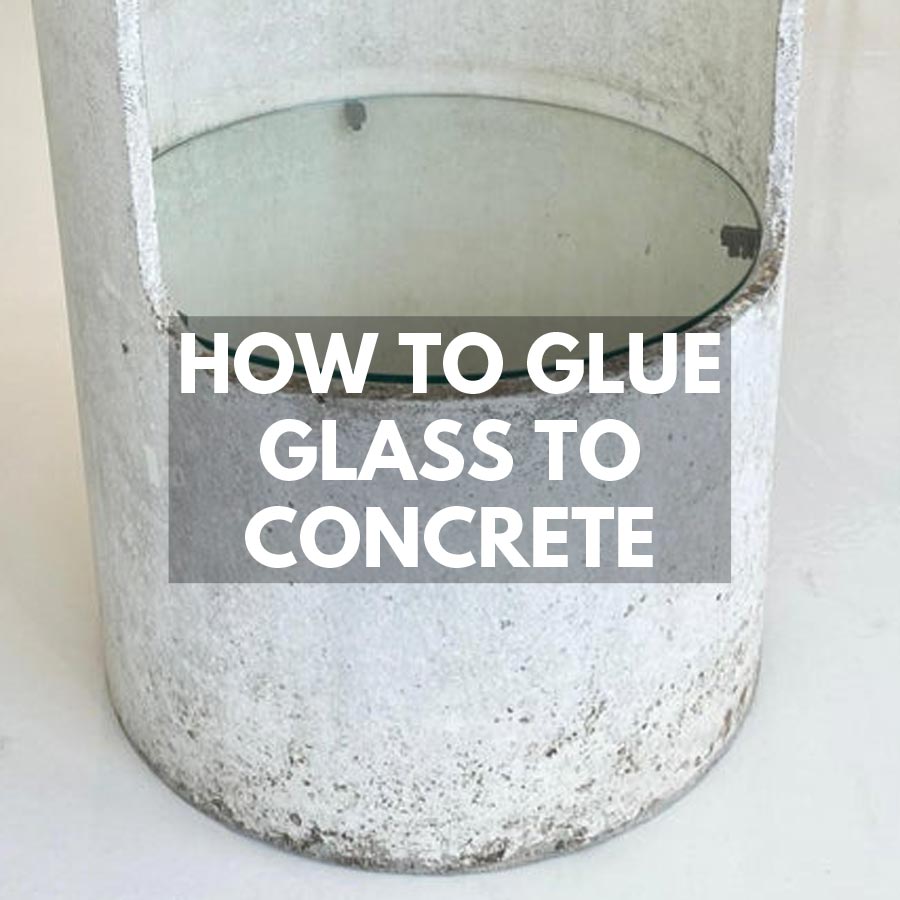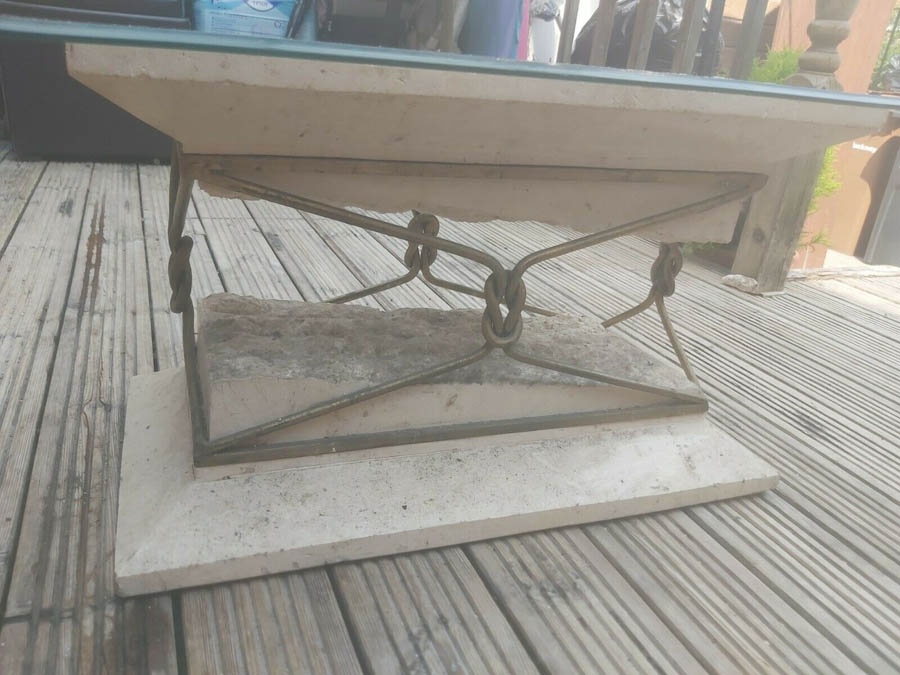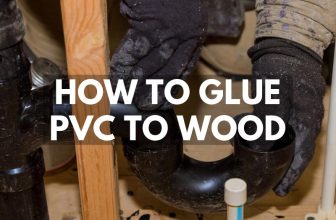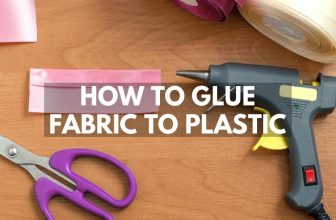
How to Glue Glass to Concrete
The three top choices for gluing glass to concrete include silicone adhesive, polyurethane adhesive, and 2-part epoxy resin. Each of these will work to their strength or weakness regarding the amount of time that’s needed to each to fully cure.
Understanding which is better for this application also depends on how the gluing process is being performed. There might be a need for clamping or stabilizing a glass piece added onto concrete surfaces. You can try and use glue for concrete to metal but with glass, you need to think about the color the glue sets too. That is why glass glue is often the best choice when the fixing is visible.
Since some adhesives may require more time to cure due to temperature or moisture conditions, the choice of which adhesive might matter more for being used. This information will best describe which adhesive is better and why it would be best be used in that situation.
What Glue Can You Use for Glass to Concrete?
It is not very often that you will need to glue glass to concrete but when you do there are a few different adhesives
Polyurethane Glue
The best advantage for gluing glass to concrete is using polyurethane glue to securely bond these two materials together. Polyurethane glue is moisture sensitive, so all that is needed to initiate the curing stage is to introduce a small amount of moisture. There is very little preparation that is needed to ensure an excellent bond. Curing times are negotiable depending on the amount of texture for concrete surfaces.
A perfect choice should include Original Gorilla Glue or Weldbond Glass/Mosaic/Tile Adhesive. These adhesives come in the form of single-component squeeze bottles that are applied easily to concrete and glass surfaces.
Epoxy Resin
Epoxy resin comes as a two-part system that is easily mixed together to create an adhesive that cures through a chemical reaction. The curing times will vary depending on the type of epoxy kits that are purchased. The curing time can be as little as 5-minutes to several hours depending on the desired working time. Shorter setting times don’t always ensure a long-lasting bond.
The most common epoxy kits include Pratley 2-part epoxy resin and Loctite Metal/Concrete kits. There is little preparation involved for gluing glass to concrete however there may be the need for clamping in some situations to have better registration or positioning.
Silicone Adhesive
Silicone adhesive has always been the ideal glue for sticking very well to glass surfaces. To have better adhesion to concrete surfaces, the silicone needs to be formulated to bond onto concrete for long-term situations that may include moisture or wet environments. The most common sealants include Loctite Clear Silicone and GE All-Purpose 100% Silicone. These silicone adhesives come in a squeeze tube or caulking tube depending on the amount needed.
Silicone adhesive does require some curing time and will need general ventilation. These silicones are generally transparent so it won’t easily be seen if the adhesive has leaked out underneath the edges of glass pieces.

How to Prepare Glass to Concrete Before Gluing
The best way to prepare glass surfaces before any adhesive is added is to clean the glass surface with 99% pure alcohol and wipe it clean. Concrete surfaces only need to have dirt or dust removed and any small surface details that prevent the glass from laying flat onto the surface. If the concrete is very uneven, a chisel and hammer will remove and help scrape away outstanding peaks that prevent a glass piece from laying flat.
Be sure to wear safety glasses if doing any chiseling on the concrete just in case small pieces can cause eye damage. Always use a vacuum to suck up any debris that could be in the way when adding the adhesive later.
How to Apply Glue for Glass to Concrete
The best method is to lightly use white chalk around the edges of a glass piece that is being glued down or onto concrete. This will help create a placement where it needs to go. Epoxy resin can be added using a plat tongue depressor or plastic spatula if the items are laying horizontally. Another layer is added to the glass and the two pieces are brought together. Silicone can be applied to horizontal and vertical surfaces but must be clamped if the angle is vertical.
This same method applies to polyurethane glue and epoxy resin but may have dripped due to the gravity of vertically glued applications. Clamping or bracing is advised if the item cannot sit horizontally. Polyurethane and silicone glue are added using a squeeze bottle and then spread onto the surface using a flat wooden stick.
How to Cure Glass to Concrete Glue
Polyurethane adhesive is the only glue that will start to cure if there is moisture present on the concrete. Just a couple quick sprays of water on the surface is all that’s needed to begin a chemical reaction for curing. Epoxy resin will cure with added heat higher than 75 degrees Fahrenheit and can take up to 1-5 hours to complete a cure cycle, with at least 24 hours for a post-cure.
Silicone will air dry in as little as 4 to 5 hours with a complete cure time of 12 to 15 hours when the temperature is about 75 degrees Fahrenheit.
Which Is the Best Glue to Use?
The best glue for budget-minded projects will be silicone adhesive which offers the strongest bond possible. The next best solution is epoxy resin which is similar in cost to silicone but can take longer to set and cure. Choosing a longer curing time for epoxy will provide the best adhesion when more than 24 hours are allowed for curing. Polyurethane adhesive is good with a quick setup time but does require a post-cure after that.










